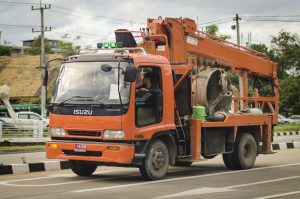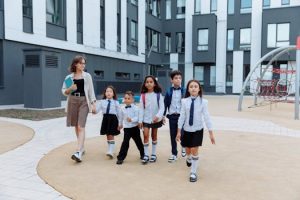Breaking Traditional Molds: The Rise of Flexible Learning Spaces
The traditional classroom setting has long been the standard for education, with rows of desks and a teacher at the front of the room. However, in recent years, there has been a shift towards more flexible learning spaces. These adaptable environments, which include elements such as movable furniture and integrated technology, are becoming increasingly popular in schools and universities. In this article, we will explore the rise of flexible learning spaces and the benefits they offer for students and educators alike.
The Need for Change
The traditional classroom setup was designed for a one-size-fits-all approach to teaching and learning. However, with the ever-changing landscape of education and the diversity of students’ learning styles, this rigid framework is no longer sufficient. In today’s world, students need to be equipped with critical thinking, collaboration, and problem-solving skills – all of which can be acquired through flexible learning environments.
Creating Comfort and Engaging Students
Flexible learning spaces provide a comfortable and supportive environment for students. With different seating options, such as bean bags, standing desks, and floor seating, students are given the freedom to choose how they want to learn. This helps to reduce distractions and allows them to focus on their studies. Moreover, these alternative seating options promote movement and physical activity, which has been proven to enhance concentration and overall well-being.
Furthermore, students are more likely to engage in their learning when the environment is inviting and dynamic. Flexible learning spaces often incorporate bright colors and natural light, making the environment more visually appealing. The inclusion of interactive technology, such as smart boards and tablets, also adds an element of excitement and keeps students actively engaged in their learning.
Collaborative Learning
In a traditional classroom, students are confined to their desks, limiting their interactions with their peers. However, in a flexible learning space, students have the freedom to move around and collaborate with their classmates. This promotes teamwork and communication skills, which are essential in today’s workforce. By working together, students can learn from one another and see different perspectives, fostering a deeper understanding of the subject matter.
Moreover, flexible learning spaces encourage project-based learning, where students work together to solve real-world problems. This type of hands-on learning not only enhances critical thinking skills but also provides students with practical experience that will benefit them in their future careers.
Adapting to Individual Needs
Every student learns differently, and flexible learning spaces cater to these individual needs. For some students, sitting at a desk for long periods can be uncomfortable and distracting. Flexible learning spaces allow them to move around and adopt different postures, ultimately promoting better concentration and learning. Additionally, students with physical disabilities can benefit greatly from these adaptable environments, as it provides them with more options for seating and movement.
Breaking Boundaries and Promoting Innovation
Flexible learning spaces break the boundaries of traditional teaching methods. By providing students with a dynamic and customizable learning environment, students are encouraged to think outside the box and come up with innovative ideas. These spaces foster creativity and promote a growth mindset, where students are not limited by the physical constraints of a traditional classroom.
The Future of Education
The rise of flexible learning spaces reflects the changing landscape of education. These environments not only benefit students, but also teachers, who can utilize these spaces to deliver a more engaging and interactive learning experience. As technology continues to advance and the way we learn evolves, flexible learning spaces will play an even more significant role in shaping the future of education.
In conclusion, the rise of flexible learning spaces is a positive step towards creating a more inclusive and effective learning environment. These spaces provide students with opportunities to engage, collaborate, and think creatively, preparing them for the ever-evolving demands of the modern world. As more and more institutions adopt these adaptable environments, it is clear that flexible learning spaces are here to stay.










